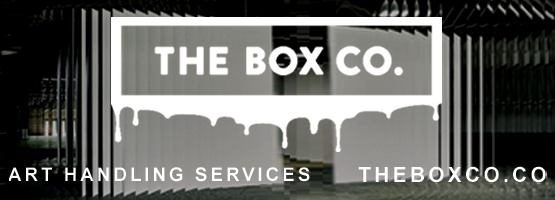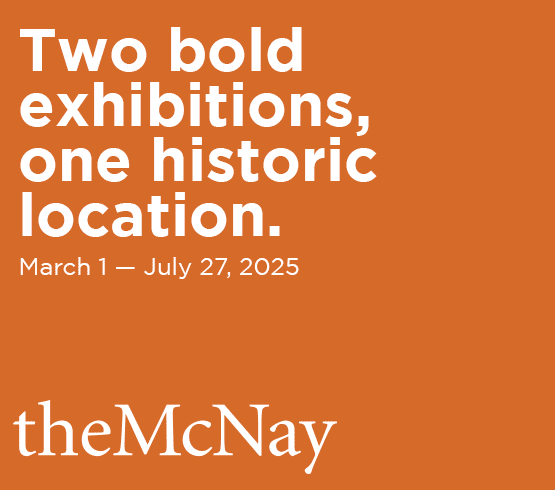A single calligraphic line runs through Mayuko Ono Gray’s large-scale graphite drawings. Meticulously rendered in chiaroscuro, the looping hiragana and kanji characters are given shape and volume, opening a path of light and shadow that envelops a scene from daily life–the artist’s cat sleeping or playing, a self-portrait, an arrangement of everyday ephemera. Ono Gray incorporates a Japanese proverb into each image. Twisting, knotting, interweaving—this continuous strand of characters takes on a life of its own, animating the pictorial plane in what the artist describes as a “metaphor of life.”
Ono Gray’s solo exhibition at the Galveston Arts Center Fall Seven Times, Get Up Eight (July 15-Oct. 1, 2023) follows closely her solo exhibition Don’t Push the River at Hooks-Epstein Galleries in Houston (May 13-June 17, 2023), and Hurry Slowly at Arts Fort Worth (May 5-June 24, 2023). The theme is the same, a reminder to stay in the moment, both in life and in art.
Ono Gray’s life has had more than a few twists and turns. She is open about her journey. The proverbs she uses reflect her life philosophy, gained through difficult experiences. “I’ve always wanted to be an artist,” says Ono Gray. Growing up in Japan, she spent Saturday afternoons with a calligraphy master, learning to copy his samples, paying attention to variations in the line, as well as the speed and pressure of each stroke. “I gained the ability to see and observe.” Now she draws from photographs in a similar way. Ono Gray keeps a camera handy around the house, taking photos of whatever catches her eye. “I’m looking at the photograph as a source and trying to translate it.”
She fell in love with the United States while on an exchange program and eventually decided to study here, but economic and personal obstacles kept her from pursuing art. Then she had a moment of realization when her grandfather passed away in Japan. “I was there for the funeral,” remembers Ono Gray. “There was my grandfather in a casket. I thought ‘was he happy in his life?’ It was the first time I thought about death and what that means. I want to be happy. After I came back I switched to art, art all the way.”
A near-death experience in 2007 changed Ono Gray’s artistic path yet again. She was just about to complete her MFA in Painting when she had a miscarriage. It led to heavy and continuous hemorrhaging. After repeated blood transfusions failed to improve her condition, the doctors told her she was going to die. Her family came from Japan to say goodbye. She was ready to go until she thought of her young daughter. “I knew I couldn’t go yet,” recalls Ono Gray. “So I decided I was not going. Then I woke up to the surprise of every physician and specialist. That experience gave me the confidence that I could have a strong say on my life. If you are determined enough, you can choose your own path.”
As soon as she came home from the hospital, she got rid of all her painting supplies and went back to drawing in graphite. “I had this strong urge to draw,” says Ono Gray. “Since then I have been drawing, and drawing whatever I feel like drawing. Because I was a manga girl and I’ve been practicing calligraphy since I was 6, my natural medium is black and white and graphite. It’s a more immediate medium.”

1 ⁄4
Mayuko Ono Gray
かたちあるものいつかこわれる_41, 2020
Graphite on paper
90" x 83"
(90" x 41.5" x 2 sheets)

2⁄4
Mayuko Ono Gray
形あるものいつかこわれる_Beginning, 2022
Graphite on paper
111" x 78"

3 ⁄4
Mayuko Ono Gray
見て分からんものは聞いても分からん_Bubbles, 2021
Graphite on paper
63" x 123"

4 ⁄4
Mayuko Ono Gray
目にいれてもいたくない_Valentine's 2023
Graphite on paper
41" x 120"
Ono Gray’s favorite proverb is “anything that takes form will break sooner or later.” She uses this phrase for all her self-portraits. “I try to make a self-portrait once a year,” explains Ono Gray. “In this way I record the progression of my own body’s decay.” In her latest self-portrait 45, she is holding two giant party balloons, 4 in black vinyl and 5 in silver. “The 5 was half-deflated by accident and I thought even the party balloon is telling me I’m getting tired and old,” laughs Ono Gray. In the drawing she looks ahead stoically, holding the deflated balloon like Madonna holding the Christ child, as if it were sacred. A soft light shines on her face, the focal point of the drawing. Entangled by the winding proverb, she looks to the future, as her cat Moxie looks to the past below her. The viewer stays in the present, arrested by the power of the image.
Recently Ono Gray has been adding bubbles to her drawings. In her “pulsating still life” series, bubbles represent the energy that is invisible on the surface. “I like the idea that still lifes are not still, but moving and pulsating.” In her self-portraits, the bubbles become a metaphor for the gradual breakdown of the body, the loss of physical existence little by little.
In the diptych Moxie’s reflection, Ono Gray combines the drawing of a straight forward image and the use of grids. The pair of drawings are mirror images done in two different styles. “This is definitely an experimental work,” explains Ono Gray, “I wanted to see if these two styles can exist at the same time. I’m playing with it.”
Ono Gray had this reflection about her life and art. “When I was going through college, I was young and poor and working full time, going to school full time, and taking care of my daughter. I was always saying to myself ‘I want to get there. I’ll be happy after I finish my two years. I’ll be happy when I transfer to four years. I’ll be happy after I graduate.’ So I never stayed in the moment. It doesn’t matter how much you want it. You can’t push time. You have to stay in the moment. Same with my art. I almost treat it like a game. There is always something new when I’m working. Some inspiration comes and helps push me to the next stage.”
—SHERRY CHENG





